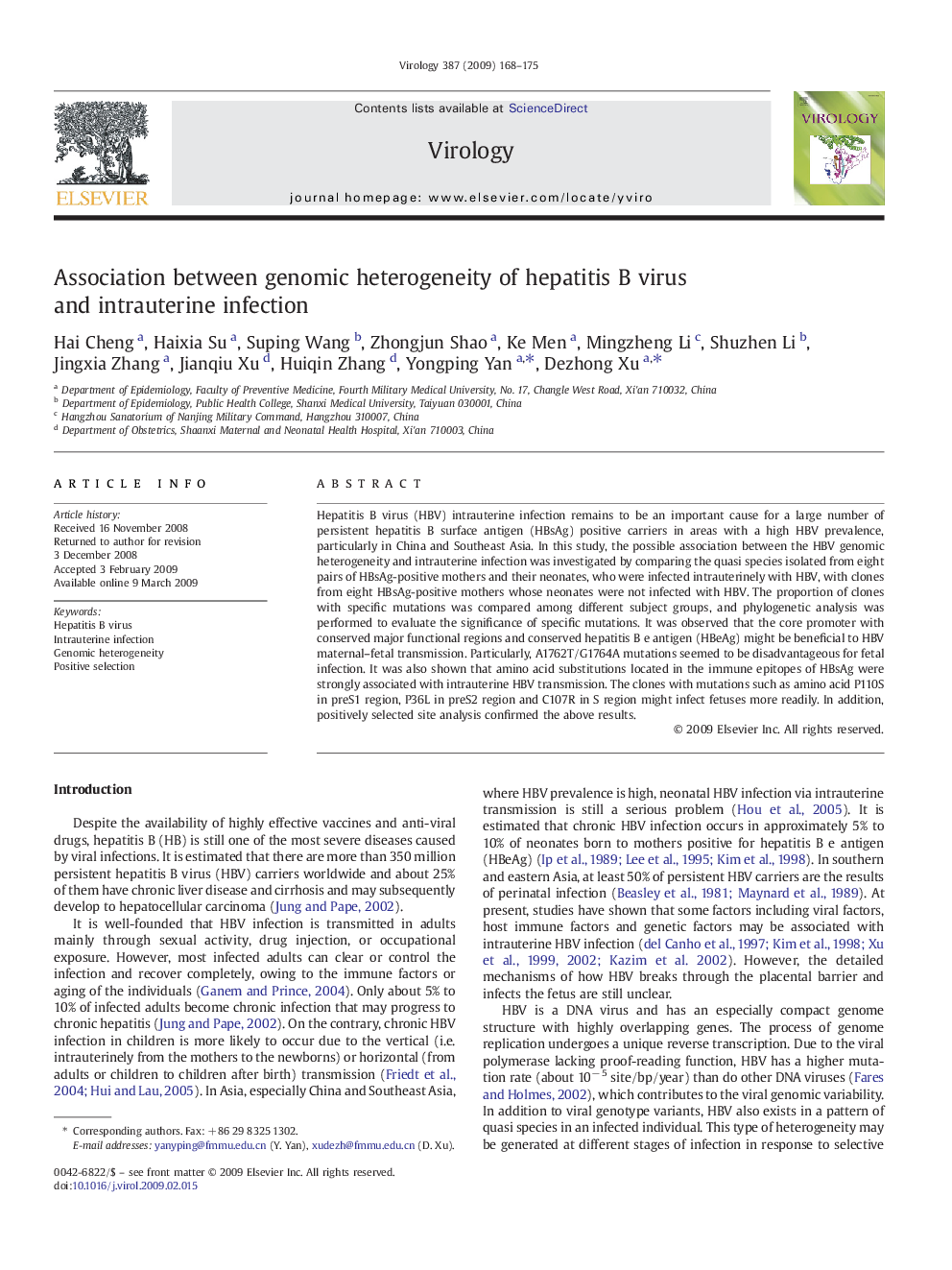| Article ID | Journal | Published Year | Pages | File Type |
|---|---|---|---|---|
| 3425462 | Virology | 2009 | 8 Pages |
Hepatitis B virus (HBV) intrauterine infection remains to be an important cause for a large number of persistent hepatitis B surface antigen (HBsAg) positive carriers in areas with a high HBV prevalence, particularly in China and Southeast Asia. In this study, the possible association between the HBV genomic heterogeneity and intrauterine infection was investigated by comparing the quasi species isolated from eight pairs of HBsAg-positive mothers and their neonates, who were infected intrauterinely with HBV, with clones from eight HBsAg-positive mothers whose neonates were not infected with HBV. The proportion of clones with specific mutations was compared among different subject groups, and phylogenetic analysis was performed to evaluate the significance of specific mutations. It was observed that the core promoter with conserved major functional regions and conserved hepatitis B e antigen (HBeAg) might be beneficial to HBV maternal–fetal transmission. Particularly, A1762T/G1764A mutations seemed to be disadvantageous for fetal infection. It was also shown that amino acid substitutions located in the immune epitopes of HBsAg were strongly associated with intrauterine HBV transmission. The clones with mutations such as amino acid P110S in preS1 region, P36L in preS2 region and C107R in S region might infect fetuses more readily. In addition, positively selected site analysis confirmed the above results.
